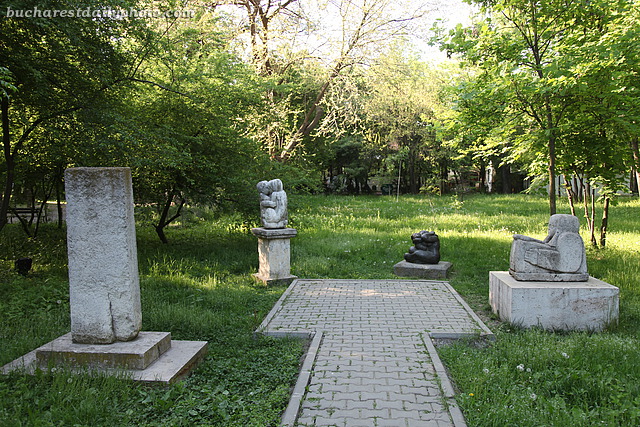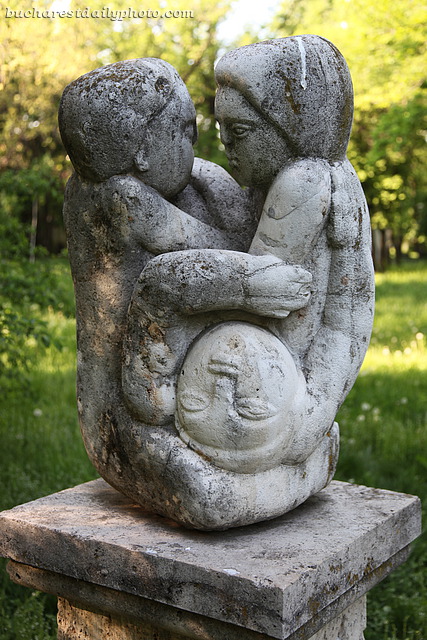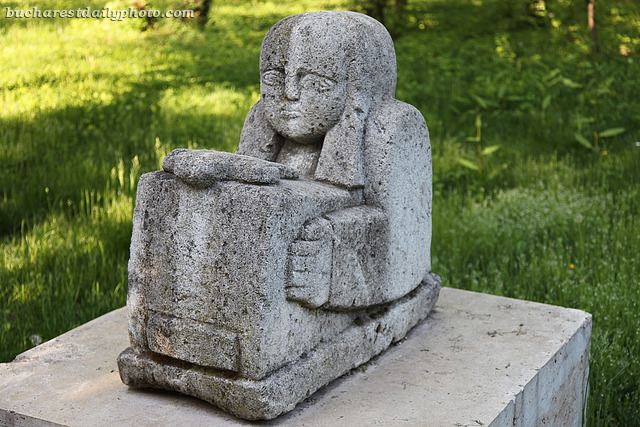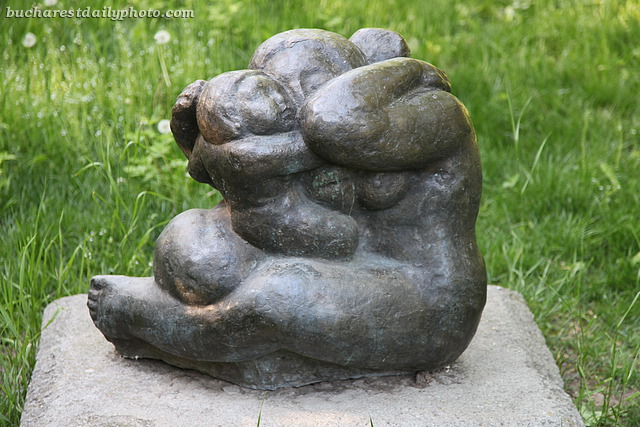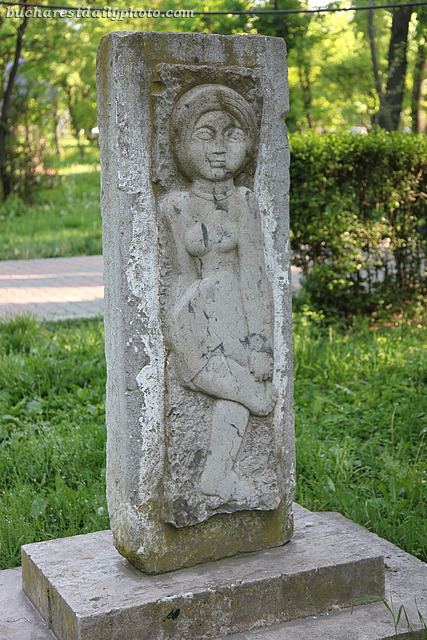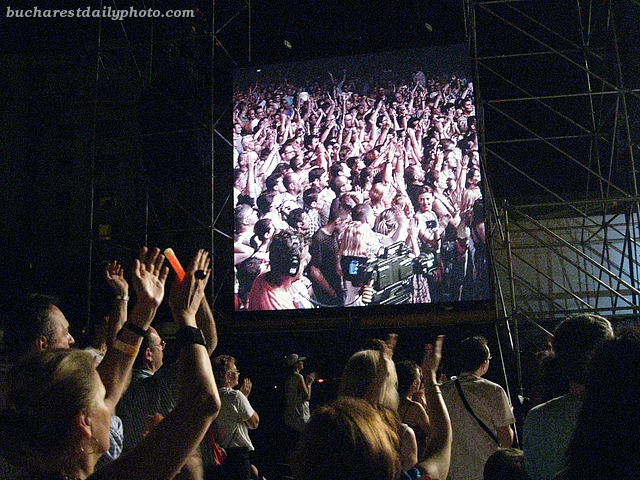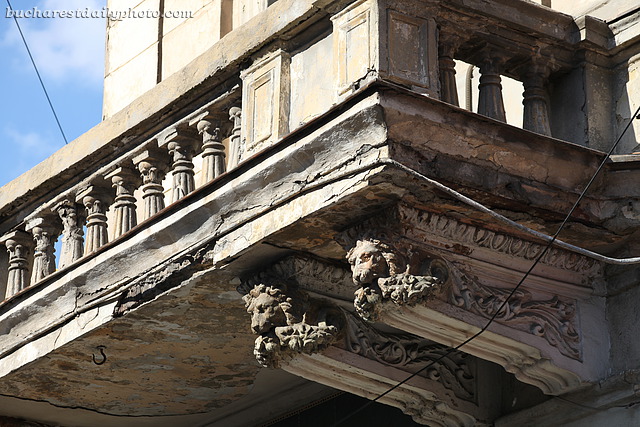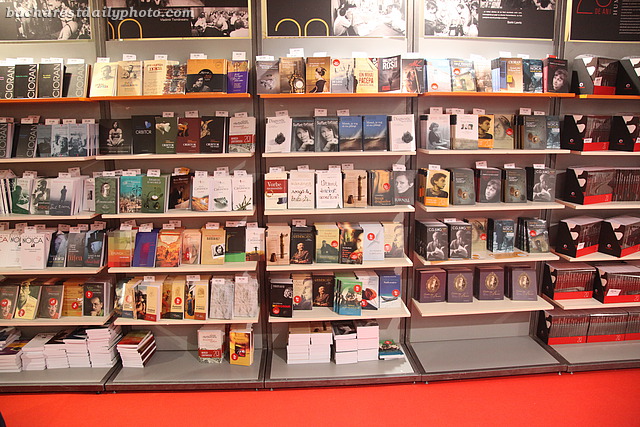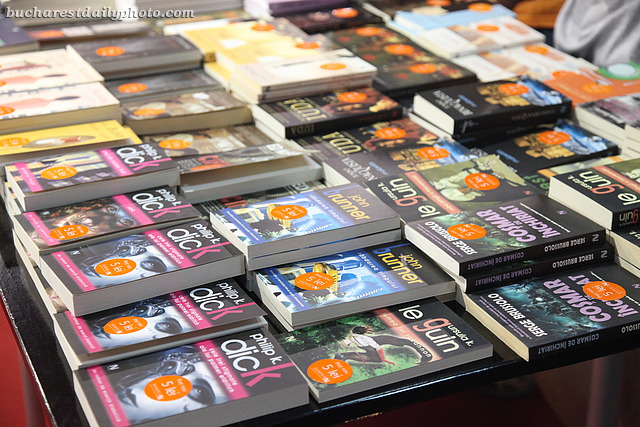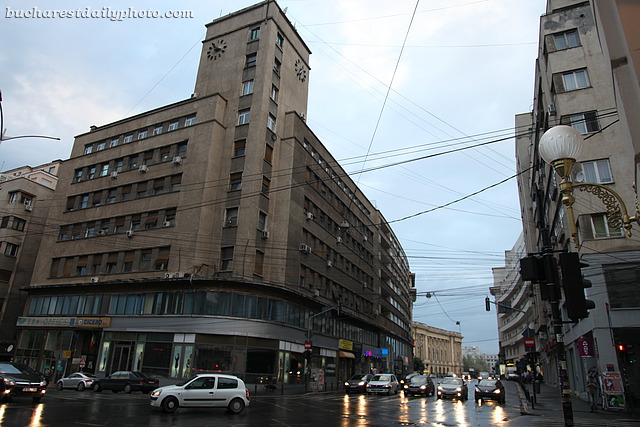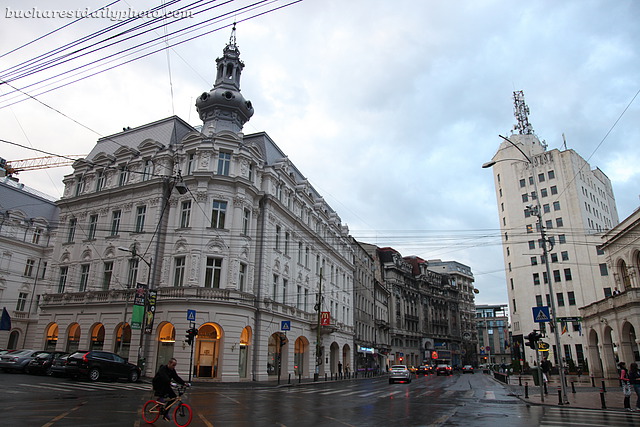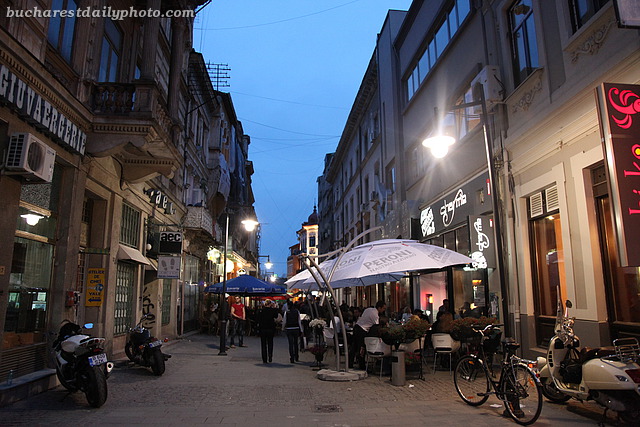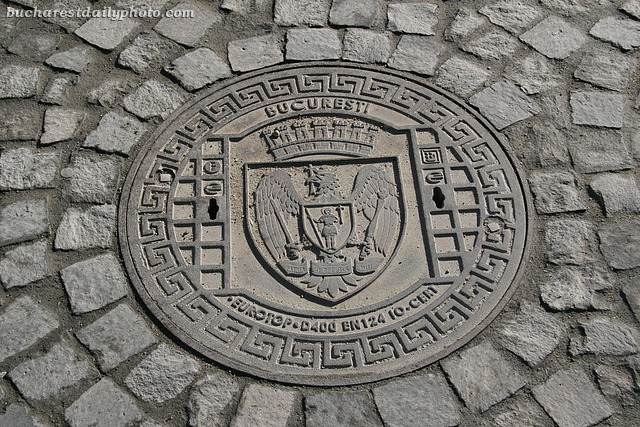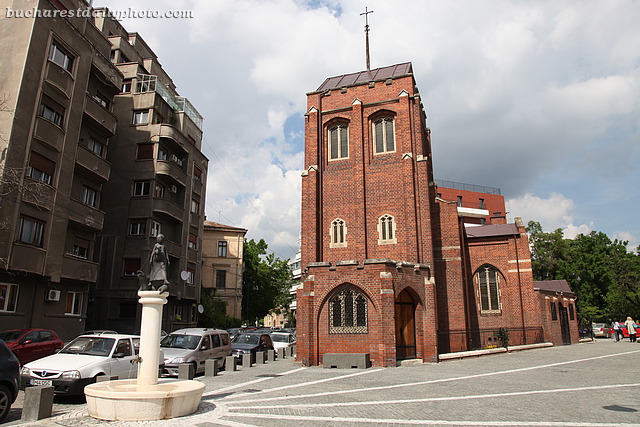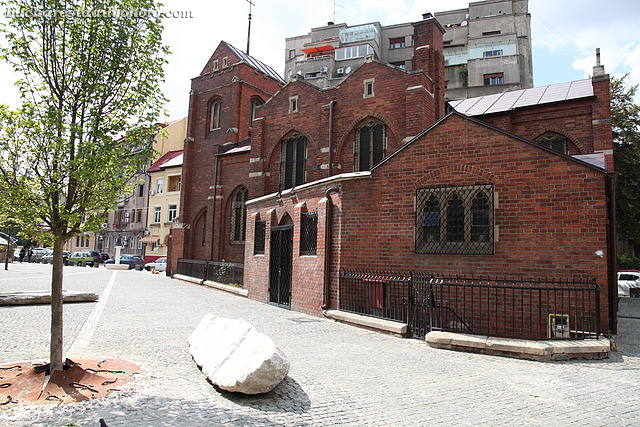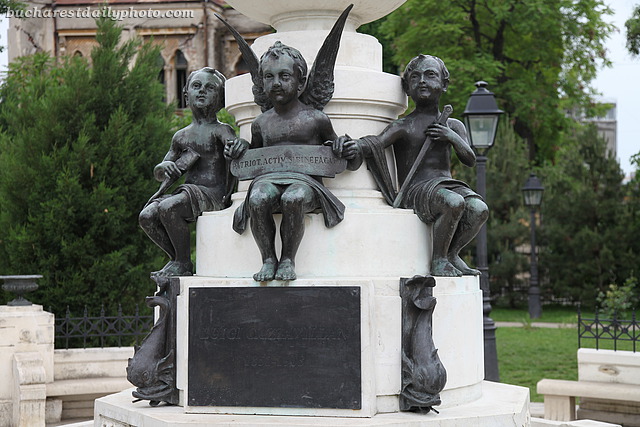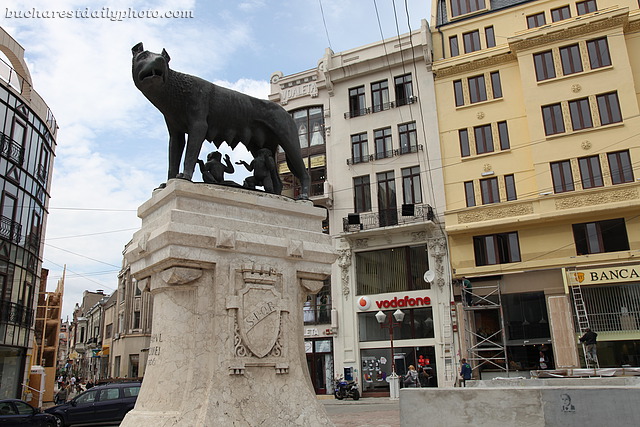Today’s photographs show four sculptures by George Apostu, grouped in Kiseleff Park. Apostu (1934 – 1986) was one of the most famous Romanian sculptors of the 20th century, being often compared with Constantin Brâncuşi.
Summer is the time for outdoor music concerts, with more and more being announced every year. As you can see from today’s photo the citizens of Bucharest seem to be enjoying this cultural activity.
Today’s photo shows the first floor balcony of Dacia Palace, built in 1874. Too bad nothing’s being done to restore this beautiful building.
The Bookfest International Book Fair is taking place these days at Romexpo Exhibition Center. Already at its fifth edition the fair is a good occasion to stock up on books as most publishing houses offer discounts of 5% up to 20 %. Going on until the 13th of June. There’s also plenty of events to choose from. This edition has Spain as special guest.
I have skipped posting for a few days (again) and I blame Sibiu for that – it turned out to be a great city 🙂 and with all the events going on I had no time for posting. I will try to make up for that in the next few days.
The summer terraces are in full bloom.
Inscribed with the coat of arms of the city.
Today’s photographs show Bucharest’s Anglican Church of the Resurrection, located near Icoanei Park, at the intersection of three streets. Like many other churches in Bucharest, it has an interesting past. It was built in 1913-1914 on land given to the British Crown by the city of Bucharest. It was opened in 1920 and dedicated in 1922 by the Bishop of Gibraltar. In the early days the church was regularly attended by the Queen Marie of Romania, granddaughter of Queen Victoria, and it was due to her help that the building was completed. The church was closed during WWII from 1940 to Christmas Day 1944, a period when it was under the care of a church guardian and cleaner, also named Maria, who continued to work at the church until 1983 when at the age of 78 was forced to retire. She was later presented with the bronze cross of the Order of St. Augustine of Canterbury by the Archbishop of Canterbury. After the communists took power the church had no permanent chaplain, being served monthly by visiting priests. This situation lasted until 1966. The church’s official webpage describes the harsh conditions of the late 1980s when the church was under constant surveillance and how “the few Romanians who dared to step inside risked losing their job, their home, even their freedom”. These days the church offers English language services every Sunday. The building’s red brick facade is reminiscent of British architecture, and is the work of architect Victor Gh. Ştephănescu.
Today’s photo shows a detail of the Luigi Cazzavillan fountain which can be found in the charming little Cazzavillan Park.
Back in October I was telling you the story of the traveling she wolf and how she’s about to move house again from the Roman Square to the foot of Lipscani Street. Well, looks like the mayor kept his word and today’s photograph shows the she wolf in her new location.
